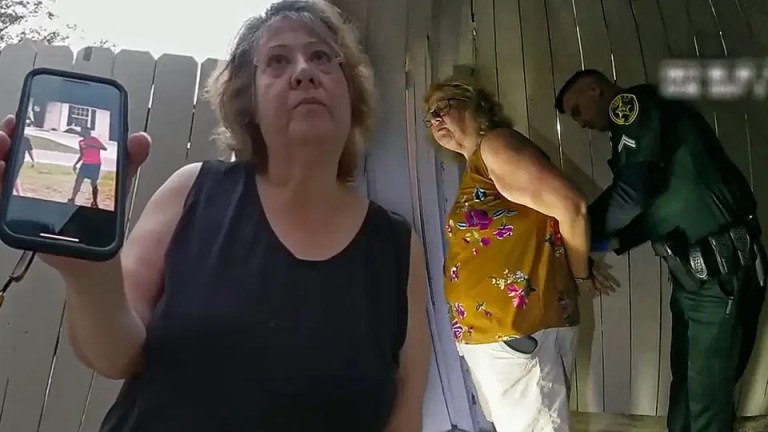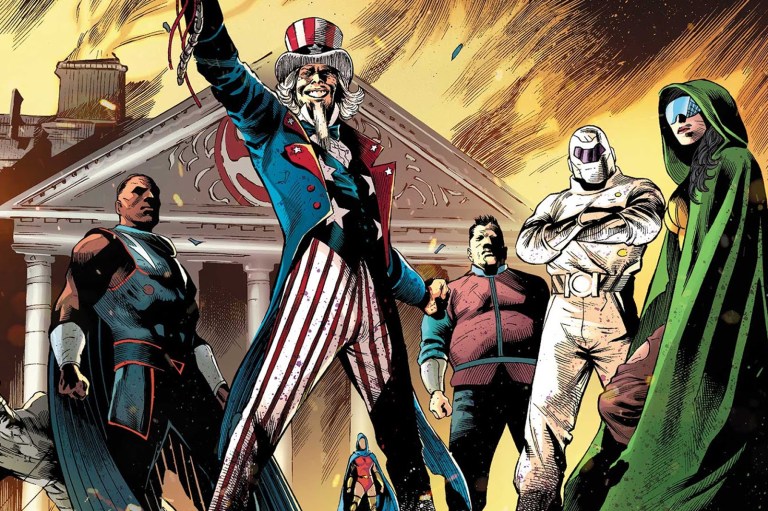The KKK vs. The Black Panthers
However "controversial" The BPP is perceived in history, they cannot occupy the same cultural memory as the Klan.
The Ku Klux Klan, as far as the United States is concerned, has been in existence at different periods throughout the country’s history. Founded in the 1860s by ex-Confederate veterans, it was a social club – the result of white, Southern boredom and anger post the American Civil War, and during the Reconstruction Era. This was the first Klan, and it lasted until the early 1870s.
The second Klan was established in 1915, partially inspired by The Birth of a Nation, which glorified the first Klan. This Klan thrived up until the late 1930s, although its end came one year before the end of World War II in 1944. The second Klan was largely focused on opposing Catholics, Jews, and new immigrants, as well as its continued terror towards black Americans.
The third Klan, which still exists today, was founded in 1946, a year after World War II. Its popularity soared in the 1950s and ’60s as the Civil Rights Movement emerged. Though in limited numbers – sources deduce a few thousands – the third Klan still exists today.
The Klan – all Klans – despise(d) everyone that wasn’t a white, Anglo-Saxon Protestant. They violently targeted black Americans, Catholics, Jews, and new immigrants, especially non-Anglo Saxons. The Klan, famous for their cross-burning, were and are white supremacists, terrorists, and in spite of their alignment to Protestants, have been rejected and condemned by almost all recognized Christian denominations and groups.
The Klans’ tactics included lynching, murder, preventing the political and economic participation of black people in the country, destroying and burning the property of all groups they hated, and maintaining a social order where white, Anglo-Saxons were at the top. It is this group that is often paralleled to The Black Panther Party. But is this accurate?
Originally founded in 1966 as The Black Panther Party for Self-Defense, the group is known simply as The Black Panther Party or The BPP. The brainchild of Dr. Huey P. Newton, the party had five other original members: Sherwin Forte, Reggie Forte, Elbert Howard, Bobby Hutton, and Bobby Seale.
The BPP’s original aim was to serve as a “police” of the police in Oakland, California where the group was founded, although they later had several chapters across the nation. As armed citizens, they monitored police interactions with the black community, with the aim of countering police brutality. The group however, evolved into a political and social organization to liberate black Americans from what they viewed as an unjust country that legally, economically, and socially disenfranchised them. And the group believed in using whatever means necessary – including violence – to achieve these aims.
The BPP had a Ten-Point Program that stated their organizational goals, some of which included self-determination, full employment, fair and adequate housing, and an end to police brutality. One of the most successful programs established by The BPP was their free breakfast program, which ensured that poor children had breakfast before school. The BPP were anti-American imperialism, anti-capitalism, and by the late 1960s, they were arguably the most popular black liberation movement in the country.
The BPP was not free from violence, nor its members free from accusations of violence. Newton was charged and convicted with the voluntary manslaughter of a police officer named John Frey. This sparked a three-year Free Huey campaign that ended when Newton won his appeal, and his conviction was overturned. The BPP was also involved in shoot-outs with the police, as well as rival groups such as the United Slaves or US Organization.
As the PBS documentary Black Panthers: Vanguard of the Revolution revealed, government agencies including the FBI, had been trying to shut down The BPP from its inception. The FBI used informants, propaganda, and intelligence efforts to turn group members against each other. This aside, The BPP struggled to unify and define its aims politically, economically, and socially among its leaders and members, who viewed the party and its priorities differently.
Riddled with disorganization, its leadership failing, internal scandals, and the government determined to see to the group’s end, The BPP dissolved in 1982. An organization known as The New Black Panther Party for Self-Defense was established in 1989 but The BPP does not recognize it as its successor, but an altogether different organization.
In light of The Black Panthers’ founding, aims, and actions – including the violence it sometimes implemented – is it really accurate to compare the group to the KKK? The Klan’s mission was white supremacy, of which they used murder, lynching, discrimination, and intimidation to achieve their aims. The BPP’s objective, by fair means or foul, was black liberation from the proverbial jaws of white supremacy. Indeed, The Black Panther Party used violence, but to compare their use of violence both in intention and consequence to that of the Klan’s, is a false equivalency.
However “controversial” The BPP is perceived in history, they cannot occupy the same cultural memory as the Klan. The BPP did not attempt a society of black supremacy. They did not ride out at night in costume to kill and intimidate white men and women and children. In fact, aside from black liberation, the BPP sought after economic equality, and supported the working poor of all races in their efforts. It is a miscarriage of justice in how truth travels through time and space, and where history is concerned, to position The BPP in the same light as the Klan, which certain sections of America has done, and continues to do to this day.
That the Klan still exists freely, in spite of its lessened popularity and influence in American culture, and that government agencies let it be, while the end of The BPP was sought after furiously, is telling of a bitter and sad American tale. What is the tale? White supremacy (and the groups that directly uphold it), despite all it has taken away from humanity, is allowed to exist under the guise of “freedom.” But black liberation, where it has the aim of emancipating people from political, economic, and social shackles, is viewed with suspicion and contempt; its ideologies imprisoned, and its leaders and members and supporters are treated as captives. ![]()











